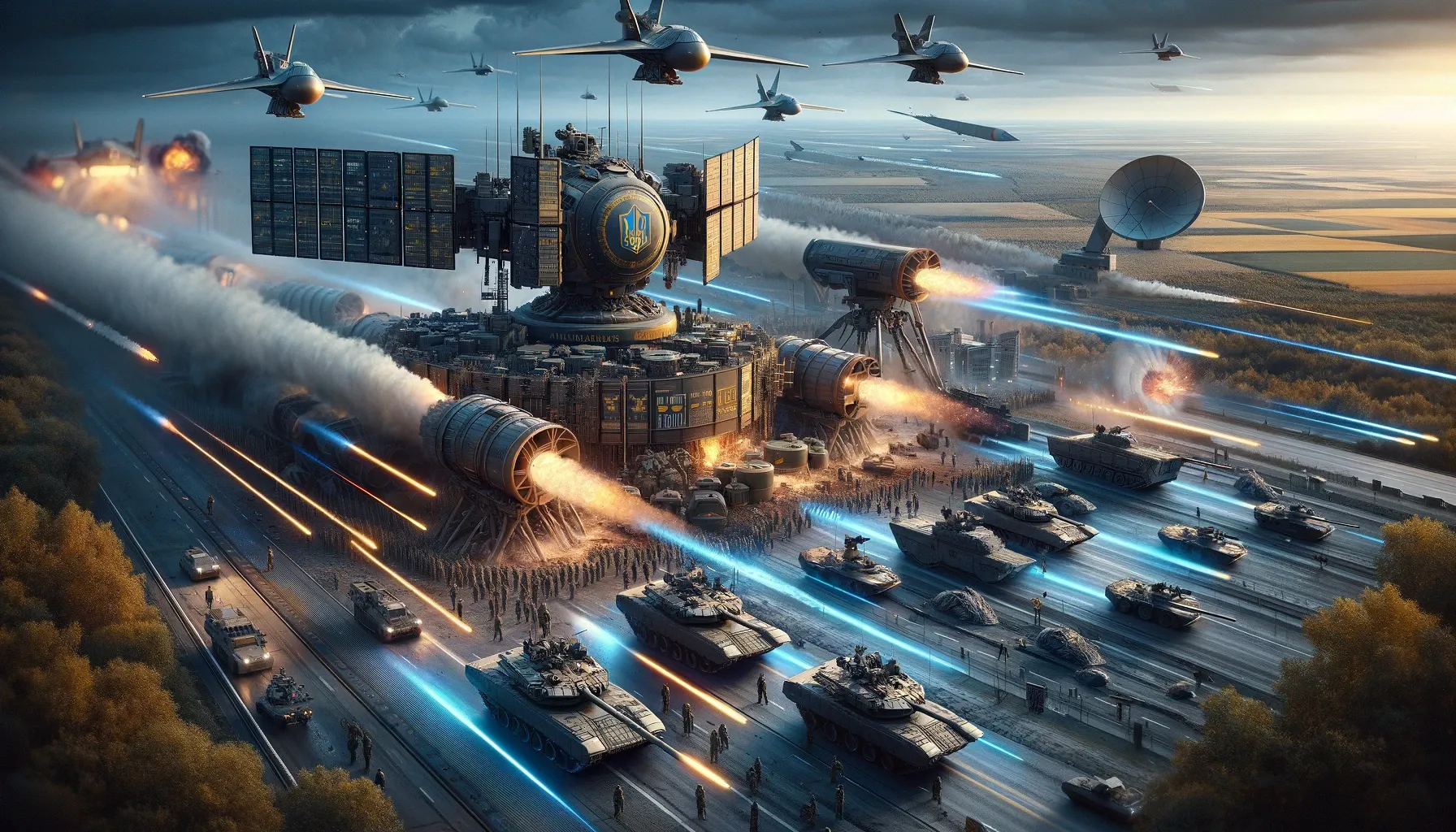Ukraine’s Strategic Buffer: Unleashing the Power of Long-Range Strikes
Hamish de Bretton-Gordon, a former Commanding Officer of the 1st Royal Tank Regiment, argues that Ukraine can significantly bolster its resistance against Russia and strike at critical points if NATO, particularly the US, authorizes deeper and more strategic strikes into Russian territory. The Ukrainian armored forces have the potential to

Hamish de Bretton-Gordon, a former Commanding Officer of the 1st Royal Tank Regiment, argues that Ukraine can significantly bolster its resistance against Russia and strike at critical points if NATO, particularly the US, authorizes deeper and more strategic strikes into Russian territory.
The Ukrainian armored forces have the potential to establish a 400km deep no-go zone for Russian troops within Russia itself. This possibility hinges on the US Government's decision to lift the restrictions on Ukraine’s defense capabilities, allowing them to conduct strikes beyond their borders. Such a move would mirror Ukraine’s success in restricting the Russian Black Sea fleet’s operations, setting the stage for Ukrainian forces to gain the upper hand.
Amidst Russia’s recent launch of an anti-satellite weapon and tactical nuclear drills near the Ukraine border, the urgency for a robust response becomes clear. If these provocations go unanswered, they will only serve to embolden Putin. Russia is likely aware of the intelligence-gathering capabilities of US and UK spy satellites that could provide crucial data for precision strikes. Therefore, it is imperative to maximize this intelligence advantage and provide Kyiv with the necessary target information.
For the past two years, Ukraine has been constrained, unable to target strategic sites within Russia while Russia has freely attacked Ukrainian targets from deep within its own territory and Belarus. Notably, Russia has utilized hypersonic weapons to strike civilian infrastructure, including a recent attack on a shopping center in Kharkiv. Allowing Ukraine to target airfields, missile launch sites, and ammunition supply routes could dramatically alter the balance of power, addressing the significant disparity in artillery firepower between the two nations.
One strategic target for Ukraine could be the Kerch Bridge. Destroying this bridge would not only be symbolically significant but could also disrupt critical supply lines for Russian forces. Such a blow might weaken Putin’s standing both domestically and internationally, especially as the toll of his ‘Special Military Operation’ becomes increasingly evident.
The US and UK have previously demonstrated their capability to intercept missiles targeting Israeli cities but have refrained from similar actions against Russian missiles targeting Ukraine. This inconsistency is perplexing, particularly given the potential for the conflict in Ukraine to escalate into a broader European war, which would inevitably involve NATO countries.
To prevent this escalation, NATO must prepare to deploy troops if necessary. However, the immediate priority should be to empower Ukraine to utilize advanced Western weaponry to its full extent, including long-range precision strikes into Russian territory. European leaders, often deterred by Russia’s nuclear threats, must recognize these as mere bluster. In terms of nuclear capabilities, the West possesses at least parity, if not an advantage, over Russia.
Western hesitation in supplying sophisticated weaponry, such as tanks and precision artillery, has previously diminished their impact. It is crucial for NATO leaders to act decisively and authorize the use of these assets before the situation deteriorates further. By taking bold action now, we can avoid the grim prospect of fighting a tyrannical army on European soil once again.
As the 80th anniversary of D-Day approaches, it is a poignant reminder of the costs of inaction. The US, UK, and their allies must remove the restrictions on Ukraine, enabling them to fully leverage their advanced weaponry to strike at the heart of Russia’s military capabilities. This strategy offers the best chance to prevent a broader conflict and ensure peace and stability in Europe.




